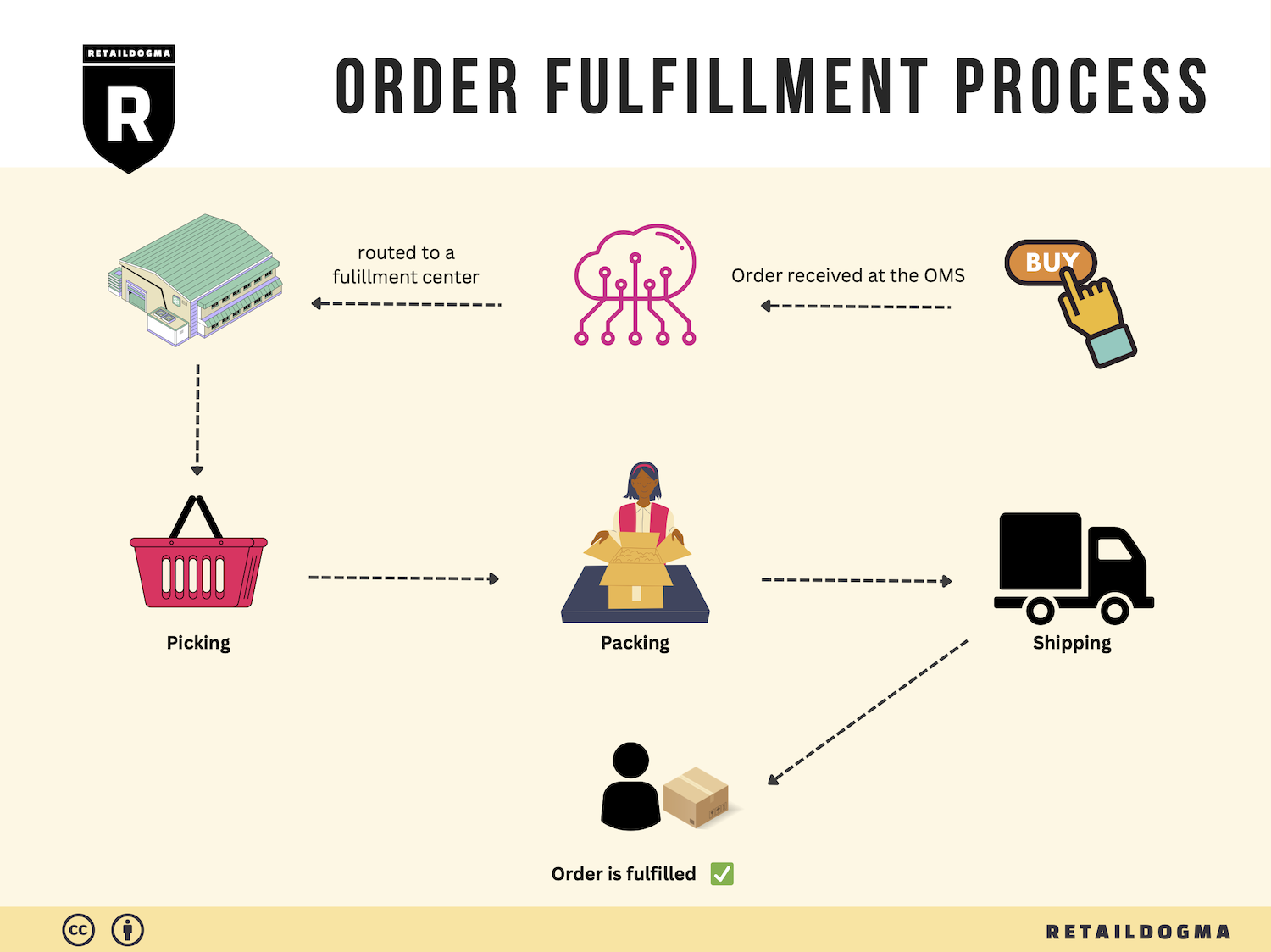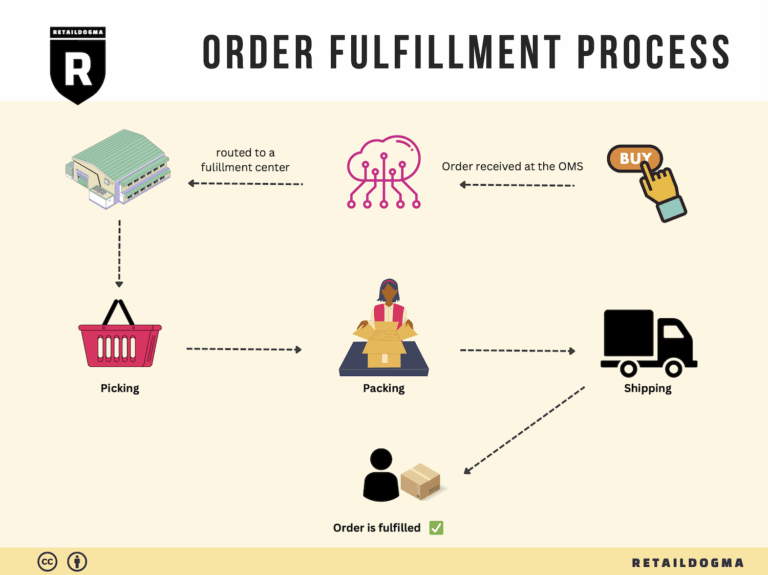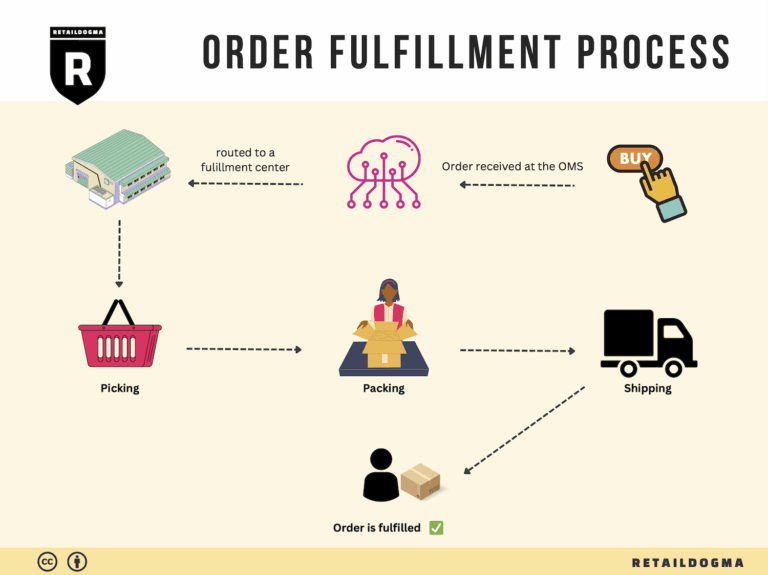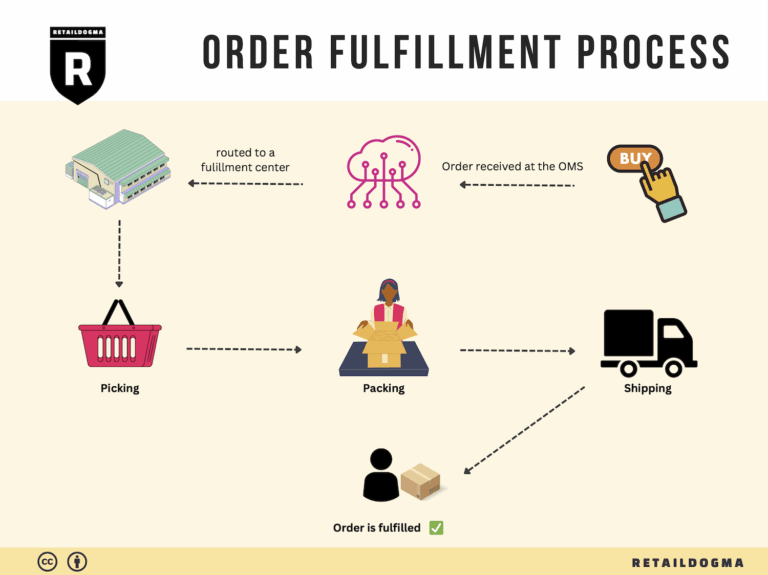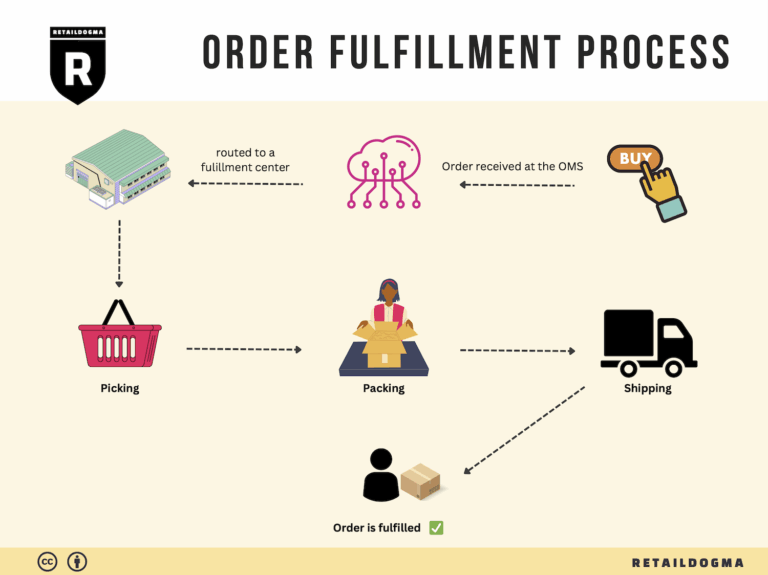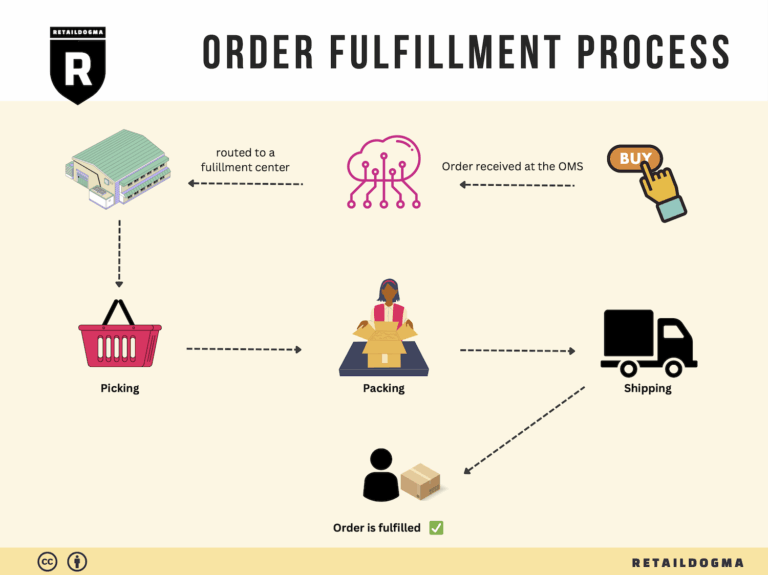Ecommerce Fulfillment Services: The Ultimate Guide (2025)
What is E-commerce Fulfillment? An Introduction for Growing Businesses
Understanding E-commerce Fulfillment
As your online business begins to thrive, the initial excitement can quickly turn into overwhelm, especially when it comes to managing the packing and shipping of orders. The reality of fulfilling orders can be daunting; it involves a series of intricate processes that, if not handled well, can hinder growth and impact customer satisfaction. At its core, e-commerce fulfillment is simply the process of getting a product from your inventory to your customer’s doorstep. However, the nuances of this process can be complex and are critical to your business’s success.
For growing businesses, fulfillment encompasses various elements, including inventory management, order processing, packaging, shipping, and handling returns. Each of these components requires careful attention and resources, which can divert your focus from what you do best—growing your brand and delighting your customers. As you scale, understanding your fulfillment options becomes paramount.
In this guide, we will explore different fulfillment models, including third-party logistics (3PL) and Fulfillment by Amazon (FBA). Each model offers unique advantages and may suit different business needs depending on your product type, sales volume, and growth strategy.
We will also delve into the core services associated with e-commerce fulfillment, such as warehousing, inventory management, pick and pack operations, and subscription fulfillment. Understanding these services will help you identify what you need as you expand your operations.
Choosing the right fulfillment partner can make a significant difference in your logistics strategy. We will discuss key factors to consider when selecting a partner, including their technology integration capabilities, customer service, scalability, and pricing structures.
Speaking of pricing, we will provide insights into how fulfillment costs are structured and what to expect as you negotiate with potential partners. Knowing how to evaluate pricing will empower you to make informed decisions that align with your budget and growth plans.

The ultimate goal of this guide is to empower you with the knowledge and tools necessary to make smart decisions about your logistics. By understanding the intricacies of e-commerce fulfillment, you can streamline your operations, enhance customer satisfaction, and position your business for sustainable growth. Let’s dive in!
What You’ll Learn In This Guide
- What is E-commerce Fulfillment? An Introduction for Growing Businesses
- The Order Fulfillment Process: From ‘Buy’ Button to Customer’s Door
- Comparing Fulfillment Models: In-House vs. 3PL vs. Dropshipping
- A Deep Dive into Amazon FBA: Pros, Cons, and Who It’s For
- Core Services Offered by Fulfillment Centers
- How to Choose a Fulfillment Partner: A 6-Point Checklist
- Understanding Fulfillment Pricing: A Breakdown of Common Fees
- Frequently Asked Questions (FAQs) about Fulfillment
- Conclusion: Is Outsourcing Fulfillment the Right Move for Your Business?
- Important Disclaimer
The Order Fulfillment Process: From ‘Buy’ Button to Customer’s Door
1. Receiving Inventory
The first step in the order fulfillment process is receiving inventory. When products arrive at your warehouse, they must be checked for accuracy against the purchase order, ensuring that the correct items and quantities have been delivered. This step is crucial because it sets the foundation for effective inventory management. A common key term associated with this stage is SKU (Stock Keeping Unit), which is used to identify individual products and track inventory levels.
Accurate receiving allows businesses to maintain an up-to-date inventory count, preventing stockouts or overstock situations that can lead to lost sales or increased carrying costs. Additionally, discrepancies identified at this stage can be addressed with suppliers before the items are shelved, fostering better supplier relationships and reducing future issues.
2. Warehouse Storage
Once inventory is received and verified, the next step is warehouse storage. Products are organized and stored in designated areas within the warehouse based on their SKU numbers or other categorization methods. This organization is essential for efficient retrieval during the picking process. Effective warehouse layout and management can greatly enhance operational efficiency.
Key terms associated with this step include FIFO (First In, First Out) and LIFO (Last In, First Out), which are inventory management strategies that dictate the order in which products are sold or used. FIFO is particularly important for perishable goods, while LIFO may be used for non-perishable items. Proper storage not only maximizes space utilization but also streamlines the entire fulfillment process, ultimately leading to faster order processing times.
3. Order Picking
Order picking is the process of retrieving products from storage to fulfill customer orders. This step is pivotal as it directly impacts order accuracy and fulfillment speed. Efficient picking methods, such as using pick lists, which detail the items needed for each order, help to streamline the process and minimize errors.
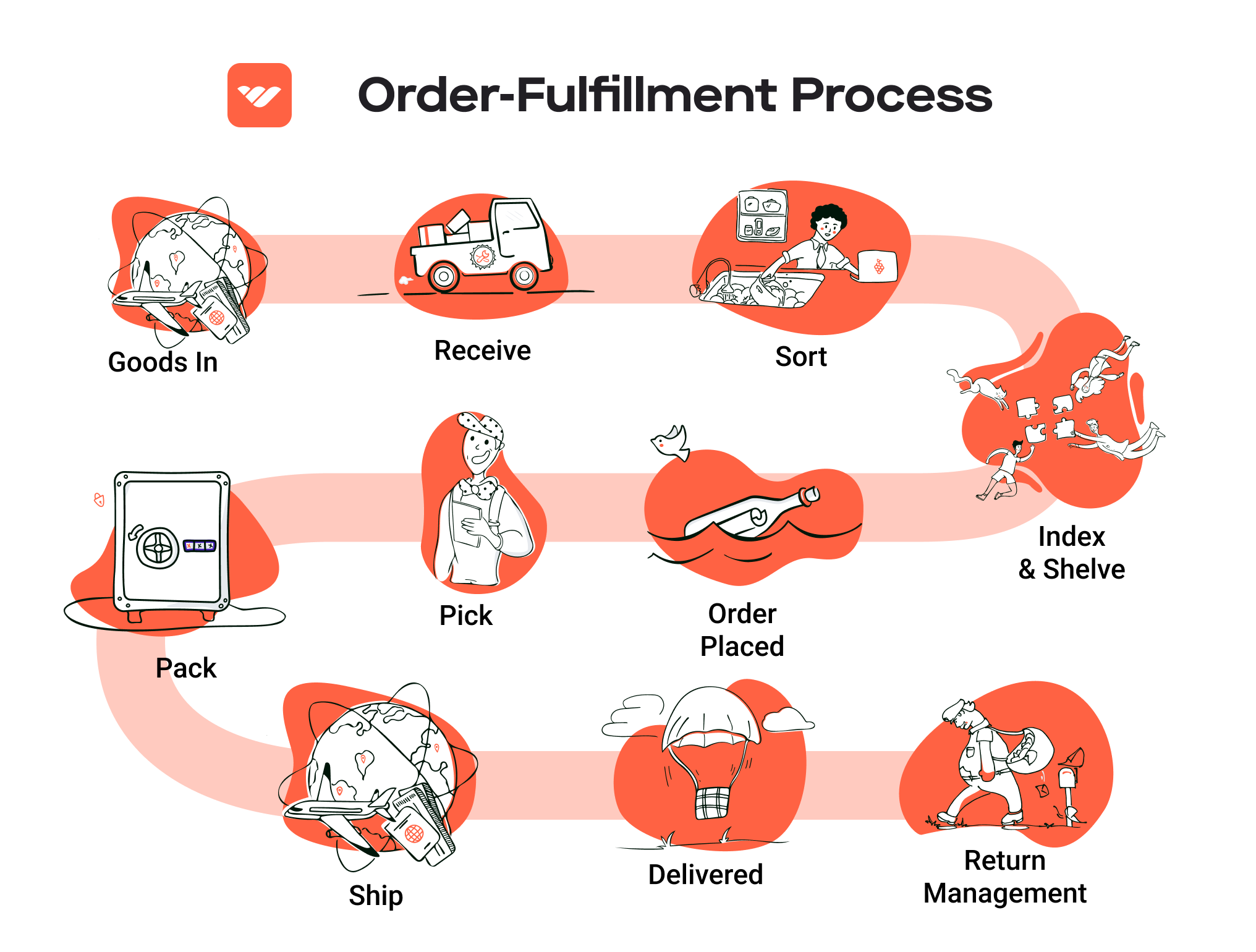
There are various picking strategies—single order picking, batch picking, and zone picking—each suited to different business models and order volumes. Effective order picking reduces the time it takes to fulfill orders, ensuring that customers receive their products promptly. Moreover, accuracy in this stage is vital; mistakes in picking can lead to customer dissatisfaction and costly returns.
4. Order Packing
Once items are picked, they move to the packing stage. This step involves assembling the products into shipments and preparing them for delivery. Proper packing is crucial as it protects the items during transit and helps to ensure they arrive in perfect condition. Key considerations include using appropriate packaging materials and labeling each package correctly.
A key term in this stage is packing slips, which are documents included in the shipment that detail the items in the package. They serve as a confirmation for the customer and can aid in returns if necessary. Effective packing processes not only enhance the customer experience by ensuring that products arrive safely but also optimize shipping costs by minimizing dimensional weight and wasted space.
5. Shipping & Delivery
The final step in the order fulfillment process is shipping and delivery. Once packages are packed, they are handed over to carriers for transportation to the customer’s door. This stage is critical for customer satisfaction, as timely delivery can significantly influence the overall buying experience.
Key terms associated with this step include tracking numbers, which allow customers to monitor their shipment’s progress. Efficient shipping processes involve selecting the right carrier based on speed, cost, and reliability, and can also include integration with shipping software to automate label generation and tracking updates. A streamlined shipping and delivery process enhances customer loyalty and can lead to repeat business, making it a vital component of the e-commerce fulfillment strategy.
By understanding and optimizing each step of the order fulfillment process, e-commerce businesses can significantly improve operational efficiency, reduce costs, and create a better overall experience for their customers.
Comparing Fulfillment Models: In-House vs. 3PL vs. Dropshipping
Fulfillment Model Comparison
| Model | Who Handles Inventory | Best For (Business Stage) | Key Advantage | Key Disadvantage |
|---|---|---|---|---|
| In-House Fulfillment | The business itself | Startups to mid-sized businesses | Complete control over the fulfillment process | High overhead costs and resource demands |
| Third-Party Logistics (3PL) | Third-party provider | Growing to established businesses | Scalability and expertise in logistics | Less control over the fulfillment process |
| Dropshipping | Supplier or manufacturer | Startups and niche businesses | Low upfront investment and minimal risk | Lower profit margins and reliance on suppliers |
In-House Fulfillment
In-house fulfillment involves managing the entire process of storage, packing, and shipping products within the business itself. This model is particularly attractive to startups and mid-sized companies that want to maintain strict control over their inventory and customer experience. By handling fulfillment in-house, businesses can implement customized processes that align closely with their brand, ensuring that packaging, messaging, and delivery meet their specific standards. However, this model comes with significant overhead costs, including warehousing, labor, and technology investments. As a business scales, it may struggle with the demands of increased order volume, potentially leading to inefficiencies and fulfillment delays. Additionally, managing logistics in-house requires a dedicated focus, which may detract from other critical business areas such as marketing and product development.
Third-Party Logistics (3PL)
Third-party logistics (3PL) providers offer an outsourced solution for warehousing, packing, and shipping products. This model is ideal for growing businesses that are looking to scale without the burden of managing logistics internally. 3PL providers like Big Sky Fulfillment can integrate seamlessly with various e-commerce platforms, allowing businesses to streamline their operations while benefiting from the expertise of logistics professionals. The key advantage of working with a 3PL is scalability; as order volumes increase, businesses can easily expand their logistics capabilities without significant capital investment. Additionally, 3PLs often have established networks and systems that can optimize shipping times and costs. However, the downside is that businesses give up a degree of control over their fulfillment process, which can affect customer experience if not managed properly. It’s crucial to choose a reputable 3PL that aligns with your business values and customer service standards.
Dropshipping
Dropshipping is a fulfillment model where the retailer does not keep products in stock but instead transfers customer orders directly to a supplier, who then ships the products directly to the customer. This model is particularly appealing for startups and niche businesses due to its low upfront investment and minimal risk. Entrepreneurs can launch their e-commerce stores without the burden of inventory management or significant capital costs associated with warehousing. However, dropshipping can lead to lower profit margins, as suppliers typically charge higher prices for their services. Additionally, businesses relying on dropshipping have limited control over product quality and shipping times, which can lead to customer dissatisfaction. To succeed with dropshipping, it’s essential to partner with reliable suppliers and ensure clear communication about order fulfillment processes.
Conclusion
Choosing the right fulfillment model is crucial for e-commerce businesses looking to scale effectively. Each model—In-House Fulfillment, Third-Party Logistics (3PL), and Dropshipping—has its unique advantages and challenges. In-house fulfillment offers control but comes at a higher cost and resource demand. 3PL provides scalability and expertise but may reduce control over the fulfillment process. Dropshipping offers low-risk entry but can lead to lower profit margins and potential quality issues. Understanding these differences will enable business owners and operations managers to make informed decisions that align with their growth strategies and operational capabilities.
A Deep Dive into Amazon FBA: Pros, Cons, and Who It’s For
Understanding Fulfillment by Amazon (FBA)
Fulfillment by Amazon (FBA) is a service offered by Amazon that allows e-commerce sellers to store their products in Amazon’s fulfillment centers. Amazon takes care of the storage, packaging, and shipping of the products directly to customers. This service also includes customer service and returns management, allowing sellers to focus on other aspects of their business while leveraging Amazon’s extensive logistics network.
When a customer places an order for a product listed with FBA, Amazon picks, packs, and ships the product on behalf of the seller. The products become eligible for Amazon Prime and other Amazon services, enhancing their visibility and attractiveness to potential buyers.
How FBA Works
-
Setup: Sellers create an Amazon Seller account and choose which products they want to fulfill through FBA. They need to prepare their products according to Amazon’s guidelines, including labeling and packaging.
-
Shipping to Amazon: Sellers ship their products to Amazon’s designated fulfillment centers. Amazon provides detailed instructions on how to prepare and send inventory.
-
Storage: Once received, products are stored in Amazon’s warehouses. Sellers can monitor their inventory levels through the Seller Central dashboard.
-
Order Fulfillment: When a customer orders a product, Amazon’s fulfillment center picks, packs, and ships the product. Amazon handles all aspects of shipping, including tracking and delivery.
-
Customer Service: Amazon provides customer service for FBA orders, managing inquiries, returns, and refunds on behalf of sellers.
-
Payment: After the sale, sellers receive payment from Amazon, minus the applicable fees for using FBA.
Pros of Using FBA
-
Prime Eligibility: One of the most significant advantages of FBA is that products become eligible for Amazon Prime. This can significantly increase sales, as Prime members are more likely to purchase products that offer fast, free shipping.
-
Customer Trust: Amazon has built a strong reputation for reliable service. By using FBA, sellers can leverage this trust, as customers often feel more confident purchasing products fulfilled by Amazon.
-
Multi-Channel Fulfillment: FBA isn’t limited to Amazon sales alone. Sellers can use FBA to fulfill orders from their own websites or other platforms, streamlining their operations and maintaining inventory in one place.
-
Scalability: FBA allows businesses to scale without the need for large investments in warehousing and logistics. As sales grow, sellers can easily increase their inventory levels without worrying about the logistics of storage and fulfillment.
-
Time Savings: By outsourcing fulfillment to Amazon, sellers can focus on other critical areas of their business, such as product development and marketing, rather than getting bogged down in logistics.
Cons of Using FBA
-
High Fees: While FBA offers many benefits, it comes at a cost. Sellers must pay various fees, including storage fees for holding inventory in Amazon’s warehouses and fulfillment fees for each order processed. These costs can add up quickly, eating into profit margins.
-
Strict Inventory Rules: Amazon has stringent guidelines regarding inventory management, including how products must be labeled and packaged. Failure to comply can result in additional fees or even suspension of the seller’s account.
-
Commingling Risks: When sellers use FBA, their inventory may be commingled with that of other sellers. This means that when a customer orders a product, they may receive a product from a different seller’s inventory. This can lead to quality control issues and negative customer experiences, especially if the other seller does not maintain the same standards.
-
Limited Control: Once products are sent to Amazon, sellers relinquish some control over their inventory. They rely on Amazon’s processes for packaging and shipping, which may not always align with their brand standards.
-
Inventory Management Challenges: Sellers must stay vigilant about inventory levels, as stockouts can lead to lost sales and negative impacts on search rankings. Conversely, overstocking can result in high storage fees.
Who is FBA Best For?
Fulfillment by Amazon is particularly suited for:
-
Small to Medium-Sized Businesses: Businesses that may not have the resources or infrastructure to manage their own fulfillment operations can benefit significantly from FBA.
-
Sellers Looking to Scale: For sellers aiming to grow their business rapidly, FBA provides a scalable solution to manage increased order volumes without the need for substantial investment in logistics.
-
Brands Seeking Visibility: Sellers wanting to tap into Amazon’s vast customer base and gain Prime eligibility can leverage FBA to enhance their product visibility.
-
E-commerce Entrepreneurs: Those who want to focus on product sourcing, marketing, and customer engagement rather than logistics will find FBA to be a practical solution.
In conclusion, while Fulfillment by Amazon offers numerous advantages that can help e-commerce businesses grow and succeed, it is essential for sellers to weigh these benefits against the potential drawbacks. By understanding how FBA works and its implications, sellers can make informed decisions that align with their business goals.
Core Services Offered by Fulfillment Centers
Inventory Management & Warehousing
Inventory management and warehousing are foundational services provided by fulfillment centers. These services involve the systematic oversight of inventory levels, storage, and organization within a dedicated warehouse space. For e-commerce businesses, effective inventory management ensures that products are available for quick dispatch, minimizing the risk of stockouts and overstock situations.
A well-structured inventory management system allows businesses to track stock levels in real-time, forecast demand, and optimize order fulfillment processes. Fulfillment centers use advanced Warehouse Management Systems (WMS) that integrate with various e-commerce platforms, ensuring seamless communication between sales and inventory. This connectivity enables businesses to maintain accurate inventory counts, streamline order processing, and improve overall efficiency.
The benefits of robust inventory management include reduced operational costs, improved cash flow through better stock control, and enhanced customer satisfaction due to timely deliveries. By outsourcing these functions to a fulfillment center, e-commerce businesses can focus on growth and customer engagement rather than the logistical complexities of inventory handling.
Pick and Pack Services
Pick and pack services are critical for e-commerce operations, especially as order volumes increase. This service involves the process of selecting products from the warehouse (picking) and preparing them for shipment (packing). Fulfillment centers employ trained staff and efficient systems to ensure that orders are picked accurately and packed securely, reducing the likelihood of errors that can lead to customer dissatisfaction.
When an order is placed, the fulfillment center’s team retrieves the items from their designated locations within the warehouse, checks them for quality, and then packages them according to specified guidelines. This process not only streamlines order fulfillment but also enhances the presentation of products through professional packing.
The primary benefits of pick and pack services include faster order processing times, improved accuracy in order fulfillment, and the ability to handle a high volume of orders efficiently. By leveraging these services, e-commerce businesses can scale their operations without compromising on quality or speed, ultimately leading to increased customer loyalty and repeat purchases.
Kitting and Assembly
Kitting and assembly services are particularly valuable for e-commerce businesses that offer subscription boxes or bundled products. This service involves grouping various items together into a single package, which can include assembly of components before they are shipped. Fulfillment centers like Big Sky Fulfillment have dedicated teams that specialize in kitting, ensuring that products are assembled according to the specific requirements of the business.
The kitting process allows businesses to create unique product offerings that can enhance customer experience and drive sales. For example, a company selling beauty products might bundle a selection of items into a themed box, adding value for customers while simplifying the purchasing decision.
By outsourcing kitting and assembly to a fulfillment center, e-commerce businesses can benefit from increased operational efficiency and reduced labor costs. It also allows for greater flexibility in product offerings, enabling businesses to quickly adapt to market trends and customer preferences. Furthermore, a streamlined kitting process can lead to quicker turnaround times for subscription services, enhancing customer satisfaction.
Returns Management (Reverse Logistics)
Returns management, or reverse logistics, is an essential service offered by fulfillment centers, particularly in the e-commerce space where return rates can be high. This service encompasses the processes involved in handling returned products, including inspection, restocking, and managing customer communications. A well-organized returns management system can significantly impact a business’s bottom line by minimizing losses associated with returns.
Fulfillment centers typically have dedicated processes in place for managing returns, ensuring that products are efficiently processed and either restocked or discarded based on their condition. This service not only streamlines the returns process but also enhances the overall customer experience by providing clear return policies and fast processing times.
The benefits of effective returns management include improved customer satisfaction due to hassle-free return processes, reduced operational costs through efficient handling of returned inventory, and valuable insights into product performance and customer preferences. By partnering with a fulfillment center for returns management, e-commerce businesses can maintain a positive relationship with customers, even when issues arise, ultimately fostering loyalty and repeat business.
In conclusion, partnering with a fulfillment center for these core services allows e-commerce businesses to enhance operational efficiency, reduce costs, and focus on strategic growth initiatives. By leveraging the expertise of fulfillment centers, entrepreneurs can create a seamless logistics experience that drives customer satisfaction and supports business scalability.
How to Choose a Fulfillment Partner: A 6-Point Checklist
Location & Warehouse Network
When selecting a fulfillment partner, the geographical location of their warehouses is crucial. A strategically positioned warehouse network can significantly reduce shipping times and costs, enhancing customer satisfaction.
Why It’s Important:
The closer your fulfillment partner’s warehouses are to your customer base, the faster you can deliver products. This can also lead to lower shipping costs and improved logistics efficiency.
Questions to Ask:
– Where are your warehouses located?
– How many warehouse locations do you operate?
– Do you have plans for expansion into new regions?
– How do you handle shipping to remote or international locations?
Technology & Integrations
In today’s e-commerce landscape, technology plays a pivotal role in managing inventory, processing orders, and tracking shipments. A robust Warehouse Management System (WMS) that integrates seamlessly with your e-commerce platforms is essential for smooth operations.
Why It’s Important:
Efficient technology integration can automate processes, reduce errors, and provide real-time visibility into inventory and order status. This is vital for maintaining customer trust and operational efficiency.
Questions to Ask:
– What technology do you use to manage fulfillment?
– Can your WMS integrate with my existing e-commerce platforms (e.g., Shopify, Amazon, WooCommerce)?
– How do you handle inventory management and updates?
– Do you provide real-time tracking for shipments and inventory?
Specializations (e.g., Cold Storage, Oversized Items)
Different businesses have unique fulfillment needs based on their products. It’s essential to choose a partner that specializes in handling your specific requirements, whether that involves temperature-sensitive items, oversized products, or subscription boxes.
Why It’s Important:
Specialized fulfillment capabilities ensure that your products are stored, packed, and shipped under the right conditions, reducing the risk of damage and ensuring compliance with industry regulations.
Questions to Ask:
– Do you have the capability to handle my specific product types (e.g., perishables, large items)?
– What special equipment or facilities do you have to accommodate these needs?
– Can you provide examples of similar products you have successfully fulfilled?
– How do you manage compliance with relevant regulations?
Scalability & Capacity
As your business grows, your fulfillment partner needs to keep pace. Understanding their capacity to scale operations is vital to avoid disruptions as order volumes increase.
Why It’s Important:
A fulfillment partner that can scale with your business will allow you to focus on growth without worrying about fulfillment bottlenecks or capacity issues.
Questions to Ask:
– What is your current capacity for order fulfillment?
– How do you handle seasonal fluctuations in order volume?
– Can you accommodate rapid growth or unexpected spikes in demand?
– What processes do you have in place to ensure scalability?
Pricing and Contracts
Transparent pricing structures and flexible contract terms are critical when choosing a fulfillment partner. Understanding the costs associated with their services will help you avoid unexpected expenses down the line.
Why It’s Important:
Clear pricing allows for better budgeting and financial planning. Additionally, flexible contracts can provide the necessary leeway to adapt as your business evolves.
Questions to Ask:
– What is your pricing model (e.g., per order, per item, monthly fees)?
– Are there any hidden fees (e.g., storage, packaging, handling)?
– What are the terms of your contracts? Is there flexibility for scaling?
– Can I review a sample contract before committing?
Customer Support & Reviews
The quality of customer support provided by your fulfillment partner can significantly impact your business operations. Look for a partner that offers dedicated support and has a strong reputation in the industry.
Why It’s Important:
Effective communication and prompt support can resolve issues quickly, minimizing disruptions to your operations. Additionally, positive reviews and testimonials can provide insights into the partner’s reliability and service quality.
Questions to Ask:
– What type of customer support do you offer (e.g., dedicated account manager, 24/7 support)?
– How do you handle issues or discrepancies in order fulfillment?
– Can you provide references or testimonials from current clients?
– What is your process for resolving customer complaints?
Conclusion
Choosing the right fulfillment partner is a critical decision that can significantly influence your e-commerce success. By carefully evaluating potential partners based on location, technology, specialization, scalability, pricing, and customer support, you can make an informed choice that aligns with your business goals. Use this checklist as a guide to navigate the selection process, ensuring that your fulfillment operations support your growth and enhance your customer experience.
Understanding Fulfillment Pricing: A Breakdown of Common Fees
Initial Setup Fees
Initial setup fees are typically charged when a business first partners with a fulfillment provider. These fees cover the costs associated with onboarding your business onto their systems. This might include integrating your e-commerce platform with their Warehouse Management System (WMS), setting up your inventory, and creating customized workflows tailored to your specific business needs.
The calculation of these fees can vary widely among providers. Some may charge a flat fee, while others might base it on the complexity of your setup or the volume of products being processed. It’s essential to clarify what is included in these fees upfront, as some providers may also charge for additional services such as training or initial inventory counts.
Receiving Fees
Receiving fees are incurred each time new inventory arrives at the fulfillment center. These fees cover the labor and resources required to unload, inspect, and organize your products in the warehouse.
Typically, receiving fees are calculated on a per-receive basis or can be based on the total volume of goods received (measured in pallets or individual items). For example, if your shipment consists of multiple pallets, the provider may charge a fixed rate per pallet received. It’s vital to understand how your specific fulfillment partner calculates these fees, as they can significantly impact your initial costs, especially when launching new products.
Storage Fees (per pallet/bin)
Storage fees are charged for holding your inventory in the fulfillment center. These fees can be calculated on a per-pallet or per-bin basis, depending on how your products are stored.
Most fulfillment providers will charge a monthly storage fee, which can vary based on the location of the warehouse and the size of your inventory. For example, a provider may charge a flat fee per pallet stored, which could range from $10 to $25, depending on the facility’s overhead costs. Additionally, some companies implement tiered pricing, where the rate decreases as the volume of stored pallets increases. It’s essential to monitor your inventory levels closely, as excess storage can lead to higher fees, particularly during peak seasons.
Pick & Pack Fees (per item/order)
Pick and pack fees are among the most common costs associated with fulfillment services. These fees are charged for the labor involved in picking items from your inventory and packing them for shipment.
Typically, fulfillment centers calculate these fees on a per-item or per-order basis. For instance, a provider may charge a set fee for picking each item from the shelf, plus an additional fee for packing the order. This can range from $1 to $3 per item, depending on the complexity of the order and the size of the items being handled. Understanding how your provider structures these fees is crucial, as even minor variations can accumulate significantly over time, particularly for businesses with high order volumes.
Shipping Fees
Shipping fees cover the cost of transporting your products from the fulfillment center to your customers. These fees can vary based on several factors, including the shipping method (e.g., standard, expedited), the weight and dimensions of the package, and the destination.
Most fulfillment providers will have negotiated rates with carriers that can offer discounts based on volume. It’s essential to inquire whether your provider passes these savings on to you. Additionally, some providers may charge a handling fee for preparing the package for shipment, which could be a flat fee or a percentage of the shipping cost. Being aware of how shipping fees are calculated and what factors influence them can help you manage your overall fulfillment costs effectively.
Tips for Getting an Accurate Quote
-
Be Clear About Your Needs: When requesting a quote, provide detailed information about your product types, expected order volume, and specific fulfillment requirements. This will help the provider give you a more accurate estimate.
-
Ask About All Fees: Ensure you understand all potential fees, including those that might not be obvious at first glance, such as returns processing or customer service.
-
Request a Breakdown: Ask for a detailed breakdown of all costs associated with the fulfillment process. This will help you compare different providers more effectively.
-
Consider Seasonal Variations: Discuss how fees may change during peak seasons or promotional periods, as these can significantly affect your overall costs.
-
Negotiate Terms: Don’t hesitate to negotiate terms and fees. Many fulfillment providers are open to adjusting their pricing based on your volume or commitment level.
By understanding these common fees and how they are calculated, e-commerce businesses can better manage their logistics costs and make informed decisions when choosing a fulfillment partner.
Frequently Asked Questions (FAQs) about Fulfillment
1. What is Big Sky Fulfillment?
Big Sky Fulfillment is a third-party logistics (3PL) provider specializing in e-commerce fulfillment services. Established in 2016, we offer comprehensive solutions including order processing, inventory management, and shipping. Our goal is to help businesses scale efficiently by handling their logistics needs, allowing them to focus on growth and customer satisfaction.
2. What services does Big Sky Fulfillment offer?
We provide a range of services tailored to e-commerce businesses, including:
- E-Commerce Fulfillment: Integration with major e-commerce platforms for seamless order processing.
- Subscription Box Fulfillment: Specialized kitting and shipping services for subscription-based businesses.
- Warehousing: Secure storage solutions and inventory management tailored to your needs.
3. How does Big Sky Fulfillment integrate with my e-commerce platform?
Our Warehouse Management System (WMS) is designed to integrate seamlessly with all major e-commerce platforms. This means that whenever an order is placed, our pick and pack teams are instantly notified, ensuring timely and accurate fulfillment.
4. What’s the difference between a warehouse and a fulfillment center?
A warehouse is primarily a storage facility where goods are kept until needed. In contrast, a fulfillment center is a specialized facility that not only stores products but also handles the entire order fulfillment process, including picking, packing, shipping, and managing returns. Essentially, all fulfillment centers are warehouses, but not all warehouses are fulfillment centers.
5. What is a 3PL?
A 3PL, or third-party logistics provider, is a company that offers outsourced logistics services, which include warehousing, transportation, and fulfillment. Partnering with a 3PL like Big Sky Fulfillment allows businesses to leverage our expertise and resources to streamline their supply chain, reduce operational costs, and enhance customer satisfaction.
6. How much do fulfillment services cost?
The cost of fulfillment services varies based on several factors, including order volume, storage space requirements, and specific services utilized (like kitting or returns management). At Big Sky Fulfillment, we offer tailored pricing based on your unique needs, so it’s best to request a quote for an accurate estimate.
7. How can Big Sky Fulfillment help me scale my e-commerce business?
By outsourcing your fulfillment needs to Big Sky Fulfillment, you can streamline logistics operations, reduce overhead costs, and improve delivery times. Our expertise in inventory management and shipping allows you to focus on core business activities like marketing and customer engagement, ultimately driving growth.
8. What types of businesses can benefit from your services?
Big Sky Fulfillment caters to a variety of businesses, including startups, established e-commerce brands, and subscription box services. Whether you are shipping hundreds or thousands of orders per month, our flexible solutions can be adapted to meet your specific needs.
9. How does your subscription box fulfillment process work?
Our subscription box fulfillment service includes kitting, packing, and shipping tailored to your schedule. We manage the entire process, ensuring that each box is assembled according to your specifications and shipped on time to delight your customers.
10. What support can I expect from Big Sky Fulfillment?
Every client is assigned a dedicated account manager who is intimately familiar with your products and operations. Our support team is always available to assist with any inquiries or issues that may arise, ensuring a seamless fulfillment experience and fostering a strong partnership.
Conclusion: Is Outsourcing Fulfillment the Right Move for Your Business?
The Benefits of Outsourcing Fulfillment
Outsourcing your fulfillment process can be a transformative decision for your e-commerce business. One of the most significant advantages is the time savings it offers. By delegating inventory management, packing, and shipping to a dedicated fulfillment partner, you free up valuable resources to focus on core business activities such as marketing, product development, and customer engagement. This not only enhances productivity but also allows you to innovate and grow your brand.
Additionally, partnering with a fulfillment service provides scalability. As your sales volume fluctuates—whether during peak seasons or promotional campaigns—you can seamlessly adjust your fulfillment capacity without the hassle of managing additional warehouse space or labor. A reliable fulfillment partner like Big Sky Fulfillment can accommodate varying order volumes, ensuring that your customers receive their products on time, every time.
Moreover, leveraging the expertise of a fulfillment partner can enhance your operational efficiency. Experienced fulfillment providers have established best practices and advanced systems in place, such as integrated Warehouse Management Systems (WMS) that connect with major e-commerce platforms. This integration ensures real-time inventory tracking, optimized order processing, and improved accuracy, ultimately leading to higher customer satisfaction.
Choosing the Right Partner for Growth
However, not all fulfillment partners are created equal. It is crucial to choose a provider that aligns with your business goals and understands your unique needs. Look for a fulfillment service that offers personalized account management, flexible solutions, and a commitment to your success.
Take Action
To determine if outsourcing fulfillment is the right move for your business, consider conducting an audit of your current shipping processes. Evaluate your order volume, shipping times, and customer feedback. Assess whether the time and resources required to manage fulfillment in-house could be better utilized elsewhere. By making informed decisions, you can pave the way for sustainable growth and a more streamlined operation. If you’re ready to explore your options, reach out to a fulfillment expert today.
Important Disclaimer
⚠️ Important Disclaimer
The information in this guide is for educational purposes. Fulfillment services, pricing, and platform features change frequently. Always conduct your own due diligence and consult with providers directly before making business decisions.
